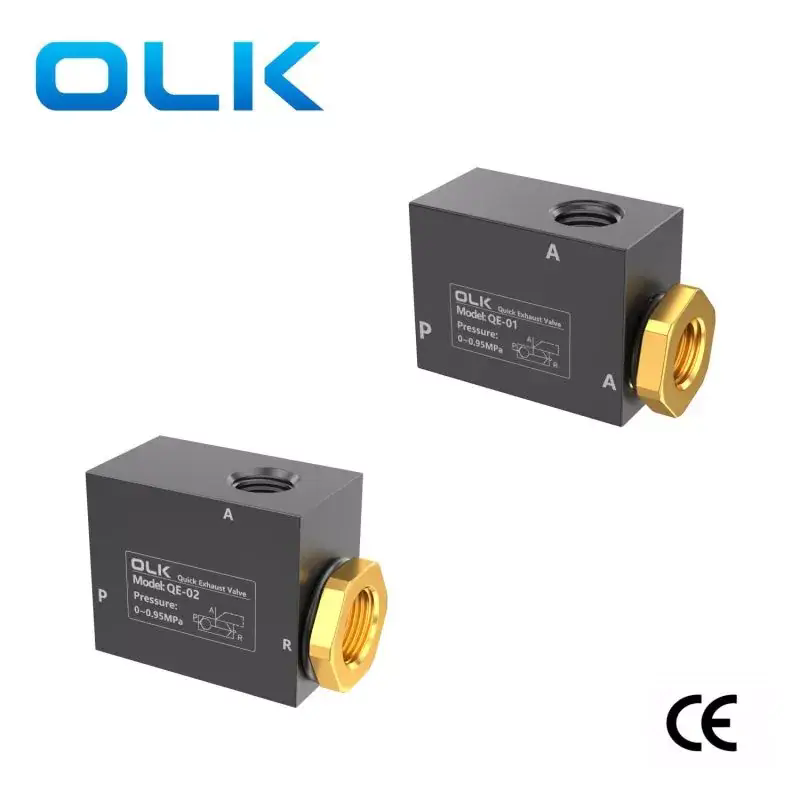What Are Pneumatic Control Components and How Do They Enhance Industrial Automation?
2025-02-22
In today’s rapidly evolving industrial landscape, automation is key to achieving efficiency, precision, and cost-effectiveness. One of the core technologies driving this advancement is pneumatic control systems. But what exactly are pneumatic control components, and how do they play a crucial role in enhancing industrial automation?
Pneumatic control components are devices that use compressed air to control machinery and processes in industrial applications. These systems are widely used because of their reliability, simplicity, and cost-effectiveness. Pneumatics can deliver high force with minimal energy consumption, making them ideal for a range of industries, including manufacturing, packaging, and automation.
At the heart of a pneumatic control system are key components such as valves, actuators, regulators, and sensors. Each of these parts works together to control the flow, pressure, and direction of compressed air, thus powering various automated operations. Let’s take a deeper look at these essential components.
1. Pneumatic Valves
Pneumatic valves are the “gatekeepers” of the system, regulating the flow of compressed air. They control the timing, direction, and volume of air delivered to other components. There are various types of valves, including directional control valves, pressure relief valves, and flow control valves. These valves ensure that the compressed air is routed to the right parts of the system at the right time, ensuring smooth and synchronized operations.
2. Pneumatic Actuators
Actuators are responsible for converting the energy of compressed air into mechanical movement. There are two primary types of actuators: linear and rotary. Linear actuators move in a straight line, while rotary actuators provide rotational motion. These actuators are used to drive cylinders, grippers, and other mechanical systems in industrial machines.
3. Pressure Regulators
Pressure regulators are vital to ensuring that the compressed air in the system remains at the correct pressure level. Too much pressure can lead to system inefficiencies or even damage components, while too little pressure can cause the system to underperform. Regulators maintain a consistent pressure that ensures all pneumatic components operate within their optimal ranges.
4. Pneumatic Sensors
Sensors in pneumatic systems monitor various parameters such as pressure, flow, and temperature. These sensors provide real-time data to the control system, allowing for adjustments and ensuring that the system operates within the desired parameters. This feedback is essential for optimizing the performance and efficiency of the entire system.
5. Air Preparation Units
Before compressed air enters the system, it must be properly filtered, lubricated, and regulated. Air preparation units handle these tasks, ensuring that the air is clean, dry, and properly lubricated. These units typically consist of filters, dryers, and lubricators, which prevent contaminants from entering the system and reduce wear on the pneumatic components.
How Pneumatic Control Components Drive Efficiency and Precision
The integration of pneumatic control components into automation systems brings several benefits. First and foremost, pneumatic systems are fast and responsive. The use of compressed air allows for rapid actuation and precise control, making it ideal for applications that require quick movements, such as in robotics or assembly lines.
Additionally, pneumatic systems are inherently safe. Since they rely on air, they do not require hazardous electrical components, reducing the risk of electrical fires or malfunctions. Furthermore, pneumatic systems are relatively simple to maintain, as they have fewer moving parts compared to hydraulic or electric systems, making them a cost-effective choice for long-term use.
Pneumatic control components are also highly adaptable. They can be easily integrated into a variety of applications, whether it’s controlling the position of a robotic arm or regulating the pressure in a packaging machine. Their versatility is one of the reasons they have become indispensable in industrial automation.
Conclusion
Pneumatic control components are essential building blocks of modern automation systems. From regulating air flow to converting energy into mechanical movement, each component plays a specific role in ensuring smooth and efficient operations. As industries continue to push the boundaries of automation, the demand for advanced pneumatic technologies will only grow. Understanding the function and importance of these components can help businesses optimize their systems, improve productivity, and reduce downtime.



